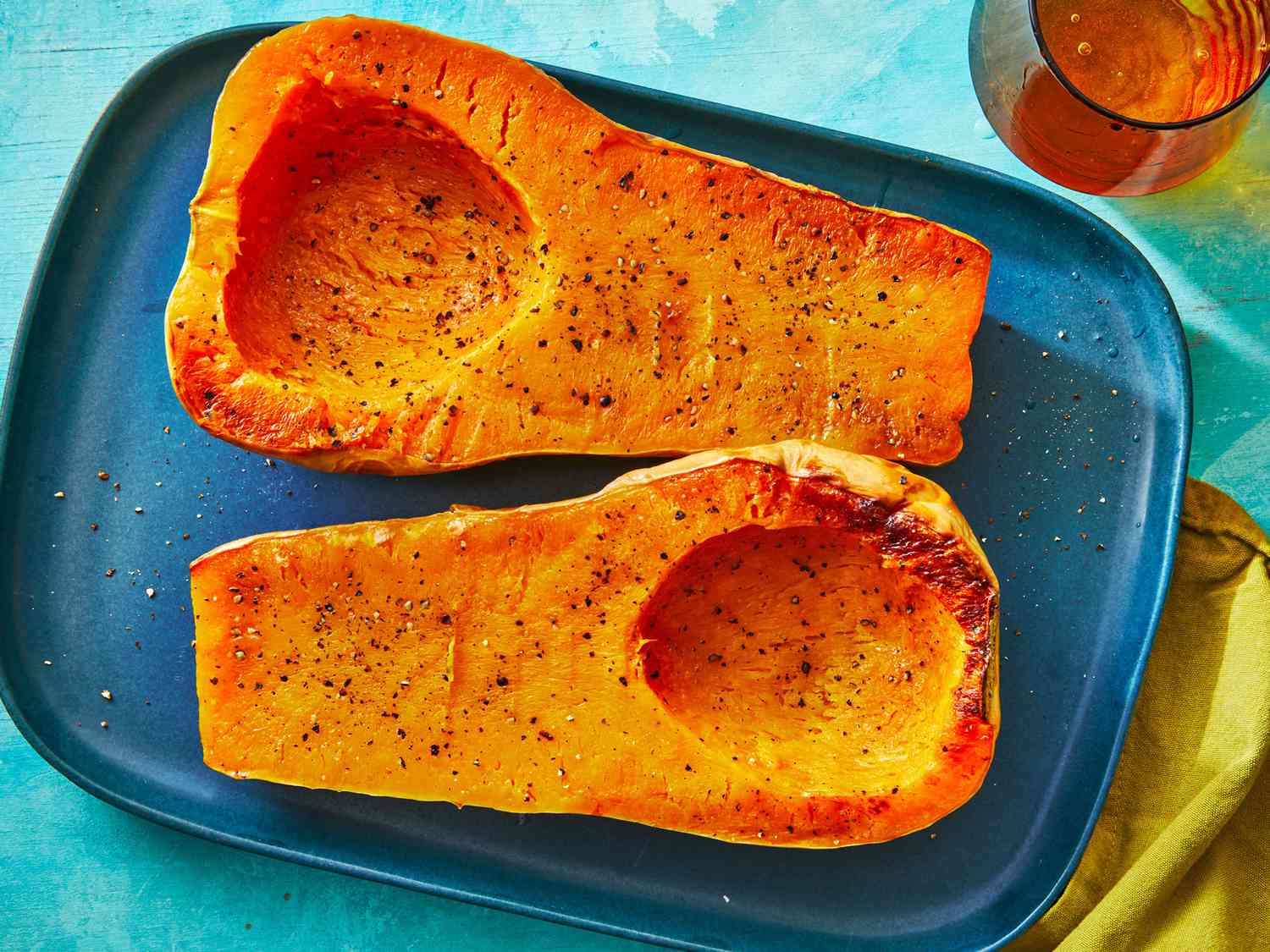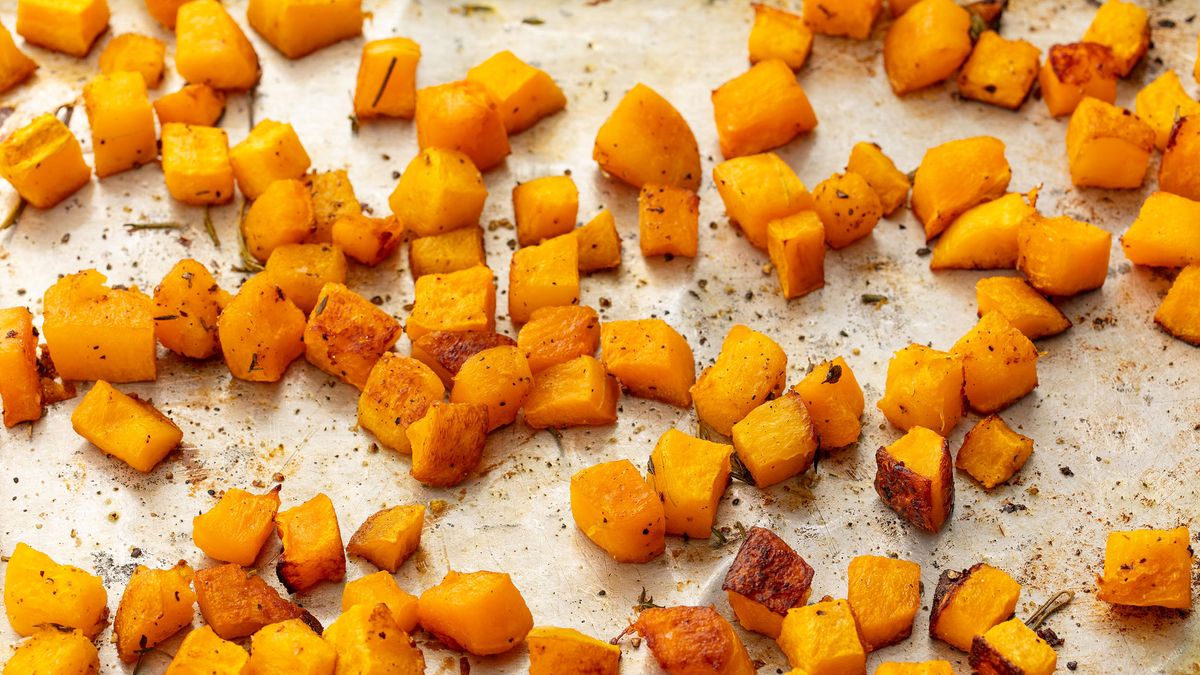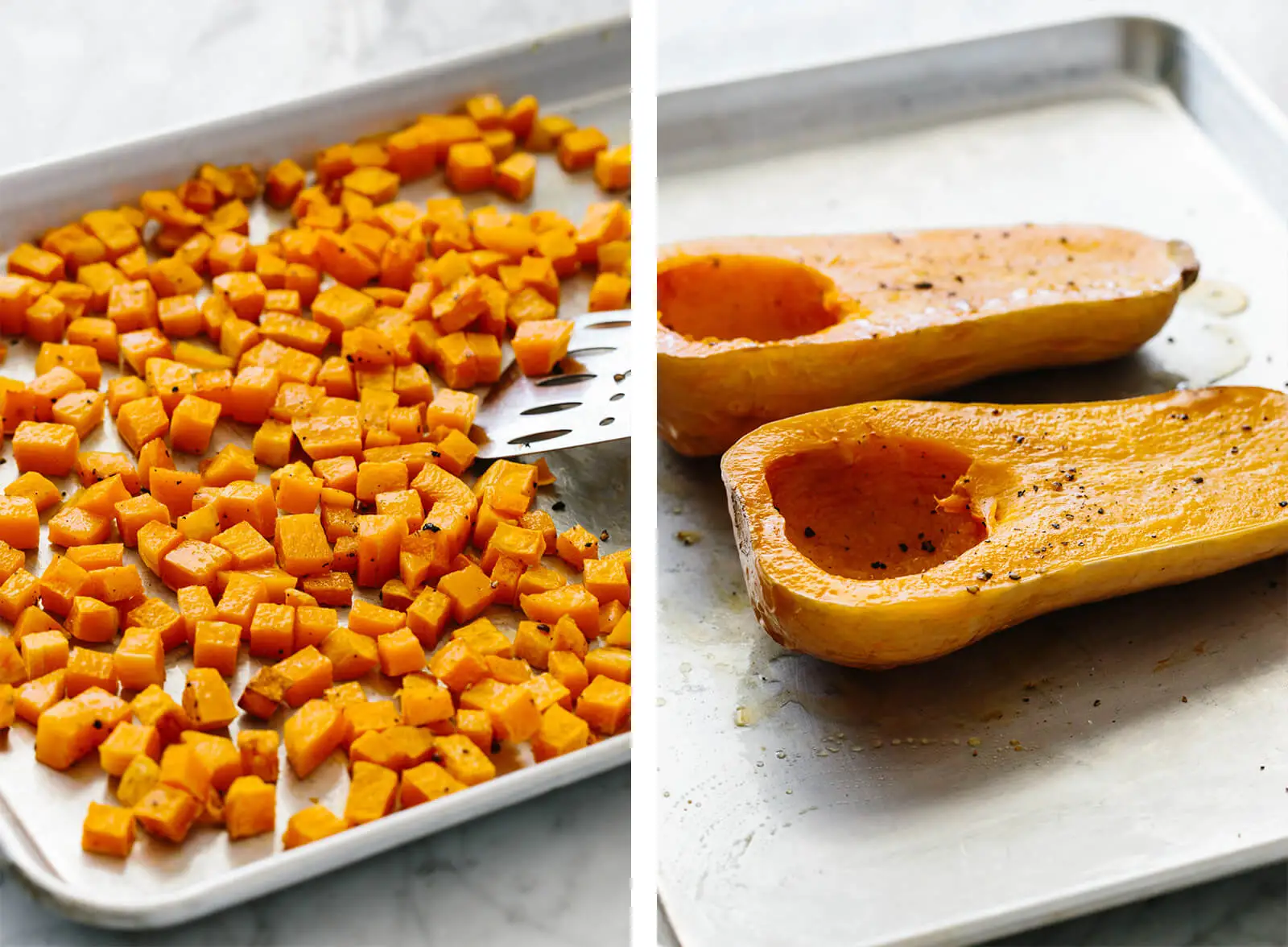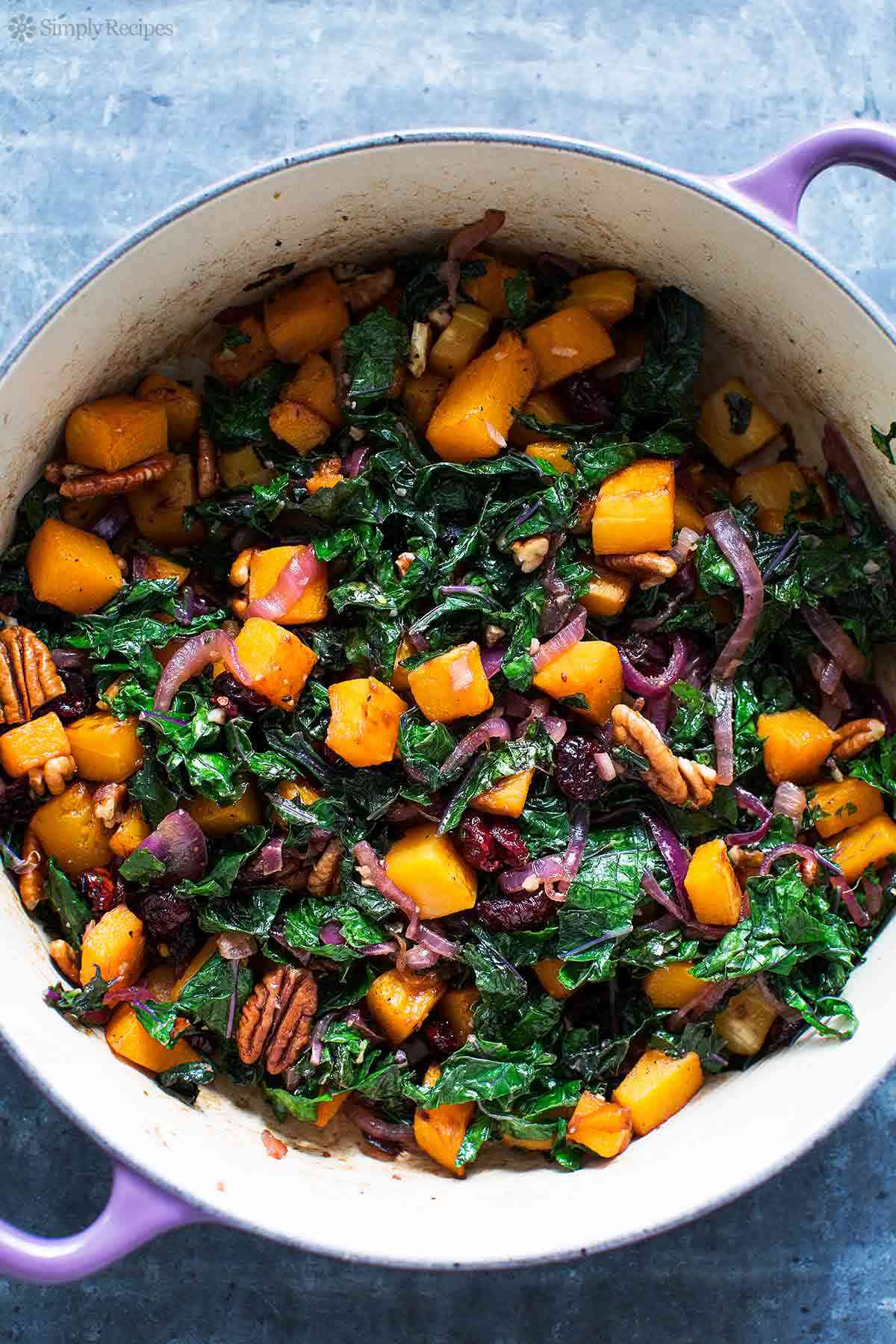
Are you ready to elevate your culinary game and savor the irresistible flavors of perfectly How To Roast Butternut Squash?Look no further, because we've got you covered with a foolproof guide to achieving that coveted golden-brown, caramelized goodness. Roasting butternut squash isn't just about cooking; it's an art form that combines the natural sweetness of this seasonal gem with a touch of savory magic.
In this step-by-step tutorial, we'll show you the secrets to selecting the finest butternut squash, cutting it with ease, and infusing it with mouthwatering seasonings that will have your taste buds dancing in delight. Join us on a culinary adventure as we demystify the roasting process, ensuring your butternut squash turns out tender and flavorful every time. From prepping your squash to choosing the right cooking method (oven, air fryer, or even grilled), we'll cover it all.
A Guide To Roasting Butternut Squash
Roasting butternut squashis a simple and delicious way to cook this versatile vegetable. The squash is naturally sweet and nutty, and roasting brings out its flavor even more. Roasted butternut squash can be enjoyed on its own as a side dish, or added to soups, salads, and stews.
Ingredients
- 1 butternut squash, peeled and seeded
- 1 tablespoon olive oil
- 1/2 teaspoon salt
- 1/4 teaspoon black pepper
Instructions
- Preheat oven to 400 degrees F (200 degrees C).
- Cut the butternut squash into 1-inch cubes.
- Toss the squash cubes with olive oil, salt, and pepper.
- Spread the squash cubes in a single layer on a baking sheet.
- Roast for 20-25 minutes, or until the squash is tender and lightly browned.
Tips
- For a sweeter flavor, add a sprinkle of brown sugar to the squash cubes before roasting.
- For a more savory flavor, add a sprinkle of cumin or chili powder to the squash cubes before roasting.
- Roasted butternut squash can be stored in an airtight container in the refrigerator for up to 3 days.
Enjoy your roasted butternut squash!
Storing Roasted Butternut Squash
Roasted butternut squash is a delicious and versatile side dish that can be enjoyed in a variety of ways. However, if you have leftovers, you'll need to store them properly to ensure they stay fresh and safe to eat.
Here are two ways to store roasted butternut squash:
1. Refrigeration:
- Allow the roasted squash to cool completely -This will prevent condensation from forming, which can make the squash soggy.
- Place the cooled squash in an airtight container -A glass or plastic container with a lid will work well.
- Store the container -in the refrigerator for up to 3 days
2. Freezing:
- Spread the roasted - squash out in a single layer on a baking sheet lined with parchment paper. This will help to prevent the squash from sticking together.
- Freeze the squash - for 2-3 hours, or until it is solid.
- Once frozen - transfer the squash to a freezer-safe bag or container.
- Label the bag - or container with the date and contents.
- Frozen roasted butternut squash -will keep for up to 6 months.
Tips
- For best flavor and texture, use roasted butternut squash within 3-4 days of roasting.
- If you are reheating frozen roasted butternut squash, thaw it overnight in the refrigerator or defrost it in the microwave.
- Roasted butternut squash can be used in a variety of dishes, such as soups, salads, and stews.
Roasting Vs Baking Squash
Roasting and baking are both common methods of cooking butternut squash, but they differ in a few key ways. Here is a detailed description of each method:
Baking
Baking is a dry-heat cooking method that uses lower heat to cook food evenly throughout. Baking is a good choice for butternut squash if you want a dish that is soft and easy to puree.
Here Are Some Tips For Baking Butternut Squash:
- Preheat oven to 375 degrees F (190 degrees C).
- Cut the squash into 1-inch cubes or wedges.
- Toss the squash cubes or wedges with olive oil, salt, and pepper.
- Spread the squash cubes or wedges in a single layer on a baking sheet.
- Bake for 30-40 minutes, or until the squash is tender.
Here is a table summarizing the key differences between roasting and baking butternut squash:
| Roasting | Baking |
| Temperature - High | Temperature - Low |
| Cooking time - Shorter | Cooking time - Longer |
| Texture - Crispy exterior, tender interior | Texture - Soft throughout |
| Flavor - Rich, nutty | Flavor - Mild |
| Uses - Side dishes, soups, salads, stews | Uses - Purees, soups, muffins |
Ultimately, the best method for cooking butternut squash depends on your personal preferences. If you like your squash with a lot of texture and flavor, then roasting is the way to go. If you prefer your squash to be soft and easy to puree, then baking is a better option.
Creating Culinary Masterpieces With Roasted Butternut Squash
Roasted butternut squash is a culinary delight that can be transformed into a variety of delectable dishes, adding richness and complexity to your culinary creations. Its naturally sweet and nutty flavor lends itself beautifully to both savory and sweet preparations, making it a versatile ingredient that can elevate your meals from ordinary to extraordinary.
Roasted Butternut Squash Soup
Indulge in the velvety smoothness of roasted butternut squash soup, a symphony of flavors that will tantalize your taste buds. Begin by roasting butternut squash cubes until tender and caramelized, capturing their natural sweetness. Infuse vegetable broth with aromatic onions and garlic, creating a flavorful base for the soup. Gently blend the roasted squash with the seasoned broth until smooth and creamy, adding a touch of nutmeg for an earthy warmth. Garnish with a drizzle of toasted cream and a sprinkle of fresh herbs, transforming this soup into a culinary masterpiece.
Roasted Butternut Squash Salad
Embark on a refreshing culinary adventure with a roasted butternut squash salad, a vibrant medley of flavors and textures. Crisp greens provide a refreshing base, while roasted butternut squash cubes add a touch of sweetness and a hint of earthiness.
Toasted walnuts introduce a delightful crunch, while crumbled feta cheese lends a salty tanginess. A vinaigrette dressing infused with maple syrup and Dijon mustard harmonizes the flavors, creating a symphony of sweet, savory, and tangy notes.
Roasted Butternut Squash Risotto
Embrace the rich and creamy indulgence of roasted butternut squash risotto, a culinary masterpiece that will satisfy your cravings. Sauté onions and garlic in butter, building a flavorful foundation for the risotto. Gradually add Arborio rice, stirring constantly to coat with the aromatic oils.
Pour in heated vegetable broth, allowing the rice to absorb the flavors and gradually release its starch, creating a creamy texture. Stir in roasted butternut squash cubes, adding a touch of sweetness and a hint of earthiness. Finish with a generous sprinkle of Parmesan cheese, creating a decadent and creamy risotto that will leave you wanting more.
Roasted Butternut Squash Pasta Sauce
Transform your pasta night into a culinary adventure with a roasted butternut squash pasta sauce, a velvety and flavorful creation that will elevate your pasta dishes. Begin by roasting butternut squash cubes until tender and caramelized, capturing their natural sweetness. Sauté onions and garlic in olive oil, adding a depth of flavor to the sauce.
Gently blend the roasted squash with the seasoned onions and garlic, creating a smooth and creamy base. Add a splash of vegetable broth and a touch of cream, enhancing the richness and texture of the sauce. Season with salt, pepper, and a hint of nutmeg, creating a harmonious blend of flavors. Toss the sauce with cooked pasta, adding a touch of fresh herbs for a final flourish.
Roasted Butternut Squash Tart
Dazzle your guests with a roasted butternut squash tart, a culinary masterpiece that showcases the versatility of this delectable ingredient. Prepare a flaky pie crust, providing a sturdy base for the tart. Sauté onions and garlic in butter, building a foundation of flavor.
Add roasted butternut squash cubes, creating a layer of sweetness and earthiness. Pour in a creamy custard mixture made with eggs, milk, and grated cheese, adding richness and structure to the tart. Bake until the crust is golden brown and the filling is set, transforming this tart into a culinary masterpiece that will impress even the most discerning palates.
With its versatility and natural sweetness, roasted butternut squash is a culinary treasure that can elevate your meals to new heights. From savory soups and salads to rich risottos and decadent tarts, roasted butternut squash offers a world of culinary possibilities, inviting you to embark on a journey of flavor and creativity.
What Food Goes Good With Butternut Squash?
Butternut squash is a versatile vegetable that can be paired with a variety of flavors and ingredients. Here are some ideas for what to eat with butternut squash:
- Sweet -Butternut squash pairs well with sweet flavors, such as maple syrup, brown sugar, cinnamon, and nutmeg. You can add these flavors to roasted butternut squash, butternut squash soup, or butternut squash pie.
- Savory -Butternut squash can also be paired with savory flavors, such as sage, rosemary, thyme, and Parmesan cheese. You can add these flavors to roasted butternut squash, butternut squash risotto, or butternut squash pasta.
- Other vegetables -Butternut squash can be paired with a variety of other vegetables, such as apples, pears, onions, carrots, and spinach. You can add these vegetables to roasted butternut squash, butternut squash soup, or butternut squash salad.
- Proteins -Butternut squash can be paired with a variety of proteins, such as chicken, turkey, beef, pork, and tofu. You can add butternut squash to protein stir-fries, stews, and chilis.
Here are some specific dishes that you can make with butternut squash:
- Roasted butternut squash with maple syrup and brown sugar -This is a simple and delicious way to prepare butternut squash. Simply roast the squash cubes in a preheated oven until they are tender, then drizzle with maple syrup and brown sugar.
- Butternut squash soup - This soup is creamy and flavorful, and it's a great way to use up leftover butternut squash. Simply puree the roasted squash with vegetable broth, onions, and garlic.
- Butternut squash gratin -This dish is rich and decadent, and it's a great way to impress your guests. Simply layer thinly sliced butternut squash with Gruyère cheese and cream, then bake until the cheese is melted and bubbly.
- Butternut squash ravioli - These ravioli are filled with a creamy butternut squash mixture, and they're served with a sage brown butter sauce.
- Butternut squash lasagna -This lasagna is a vegetarian-friendly option that's packed with flavor. Simply layer lasagna noodles with roasted butternut squash, ricotta cheese, and spinach, then bake until the cheese is melted and bubbly.
Butternut squash is a healthy and delicious vegetable that can be used in a variety of dishes. So get creative and experiment with different flavors and combinations!
FAQ's About How To Roast Butternut Squash
Do I Need To Peel Butternut Squash Before Roasting?
While butternut squash skin is edible and it can even turn nice and crisp when roasted, many people prefer to peel it first so it's easier to eat. Butternut squash skin is smooth and thin and the best way to peel it is by using a sharp vegetable peeler. It really is that simple!
Can You Eat Butternut Squash Raw?
That's right, you can eat butternut squash raw (yep, we said it). Raw butternut squash is carrot-like and holds up well in crunchy salads and slaws. If opting for raw squash over cooked squash, start by peeling away the tough outer skin (FYI, you can eat the skin when it's cooked.
Why Is My Roasted Squash Soggy?
Mushy veggies are also often the result of overcooking. When the interior is loaded with moisture, you have to cook it for much longer to evaporate all of the water and avoid the interior having the unappealing, spongy, raw texture that eggplant and zucchini are notorious for.
What Do You Put Under Butternut Squash?
Butternut squash prefer hot, humid conditions, so ideally plant out in a sunny spot away from cool winds. They like rich soil, so add a suitable compost to the soil before planting out. Feed regularly with Miracle-Gro® Performance Organics Fruit & Veg Concentrated Liquid Plant Food.
Conclusion
In conclusion, roasting butternut squash is more than just a cooking technique; it's a delightful journey that begins with selecting the perfect squash, proceeds with meticulous preparation and seasoning, and culminates in a dish that's bursting with natural sweetness and savory complexity. With the knowledge and tips you've acquired from this guide, you are now well-equipped to create roasted butternut squash that will leave a lasting impression on your taste buds and those of your loved ones.
Remember, roasting butternut squash is a versatile and rewarding culinary adventure that can be customized to suit your personal taste. So, don't hesitate to experiment with different seasonings and cooking methods until you find the perfect combination that tickles your palate. Whether you're a seasoned chef or a beginner in the kitchen, the joy of creating this delectable dish is accessible to all. Embrace the warmth, sweetness, and richness of perfectly roasted butternut squash and relish the satisfaction of mastering this essential fall and winter favorite. Happy cooking!



